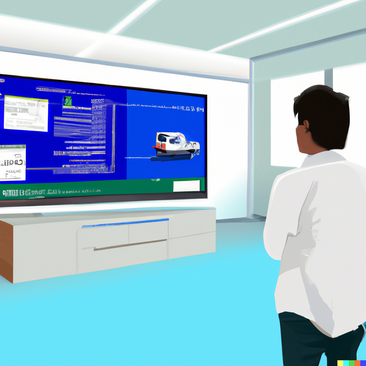Technology Goals
Quality Assurance (QA) refers to the systematic processes used to ensure the quality, functionality, and performance of software throughout the development lifecycle. QA encompasses a broad range of practices, including manual and automated testing, Test-Driven Development (TDD), and Quality Control (QC), all aimed at preventing defects and ensuring that the software meets customer requirements and performs reliably under various conditions.
QA is essential for identifying bugs, ensuring the application behaves as expected, and verifying that it complies with predefined standards. QA methodologies can be employed at every stage of the software development lifecycle, from requirements gathering to deployment, ensuring that any issues are caught early and corrected before the software reaches production.
In our projects, QA ensures that software is rigorously tested and validated before it is released to users. Whether through automated test suites, manual testing processes, or test-driven development, QA helps deliver reliable, high-quality software to our clients.
Strengths of QA in Our Projects
QA plays a crucial role in ensuring the reliability, stability, and security of software systems. One of the key strengths of QA is its ability to identify defects early in the development process, reducing the cost and complexity of fixing bugs later in the project. QA incorporates various testing methods:
- Manual Testing: QA engineers perform manual testing to validate the functionality and user experience of the application. This process is essential for ensuring that edge cases, usability issues, and non-functional aspects of the system (such as visual components) are thoroughly tested.
- Automated Testing: Automated tests allow for repetitive, high-volume testing at scale, ensuring that the software remains stable as new features are added. Test automation frameworks (such as Selenium, JUnit, or PyTest) help reduce manual effort by automatically validating code changes across the entire system.
- Test-Driven Development (TDD): TDD is a software development approach where tests are written before the code itself. This ensures that all functionalities are covered by tests from the start, encouraging better design and reducing the likelihood of introducing bugs.
- Quality Control (QC): QC refers to the actual testing of products to ensure they meet the defined quality standards. While QA focuses on the process, QC focuses on product-level validation. Both manual and automated testing are part of QC.
QA also focuses on non-functional requirements, such as performance, security, and scalability. Tools like JMeter (for performance testing) and OWASP ZAP (for security testing) ensure that the software not only works as expected but can handle various conditions, including heavy load or security threats.
Comparison with Other Quality Practices
QA differs from Quality Control (QC) in that QA is proactive, focusing on improving processes to prevent defects, while QC is reactive, focused on identifying and addressing defects in the product itself. Both are essential components of the software development lifecycle, ensuring that both the process and product are of the highest quality.
TDD, compared to traditional testing methods, flips the development process by ensuring that tests are written before the code itself. This method is highly effective in ensuring that all new code is covered by tests, leading to cleaner code and fewer bugs. However, it requires a higher initial time investment, which pays off through reduced debugging and better code quality.
Automation in QA is often compared to manual testing. Automated testing excels in speed and efficiency, especially for regression testing or performance benchmarks. However, manual testing is crucial for understanding user interactions, ensuring usability, and covering scenarios that automated tests may overlook.
Real-world Applications in Client Projects
- E-commerce Application: In a large-scale e-commerce project, automated testing was used to validate hundreds of features and workflows before each release, ensuring a smooth user experience during high-traffic periods. Automated tests covered the entire purchase process, from adding items to the cart to payment and order confirmation, reducing the likelihood of critical bugs in production.
- Financial Services: For a fintech client, QA played a critical role in ensuring the accuracy and security of financial transactions. Automated test suites verified transaction flows, while security testing tools validated compliance with industry regulations such as PCI-DSS.
- TDD Implementation: In a SaaS platform, TDD was used to drive the development process, ensuring that each new feature was thoroughly tested from the beginning. This approach reduced the time spent on debugging and improved the overall quality of the codebase.
Client Benefits and Feedback
Clients have consistently praised the reliability and performance of software that undergoes rigorous QA processes. For example, a client in the healthcare industry reported fewer production issues and improved user satisfaction after integrating automated testing into their release pipeline. Another client in e-commerce highlighted the importance of manual testing in catching usability issues, which led to a better user experience and increased conversion rates.
In projects where TDD was implemented, clients have noted that the upfront investment in writing tests paid off by reducing the time spent on fixing bugs and improving overall code quality.
Conclusion
QA is a vital component of software development, ensuring that systems are built to meet high-quality standards, remain reliable under various conditions, and provide a positive user experience. Through a combination of manual and automated testing, Test-Driven Development (TDD), and Quality Control (QC), QA helps prevent defects, improve code quality, and ensure that software performs as expected in production. This comprehensive approach to quality management results in higher customer satisfaction, reduced risks, and faster, more reliable deployments.







